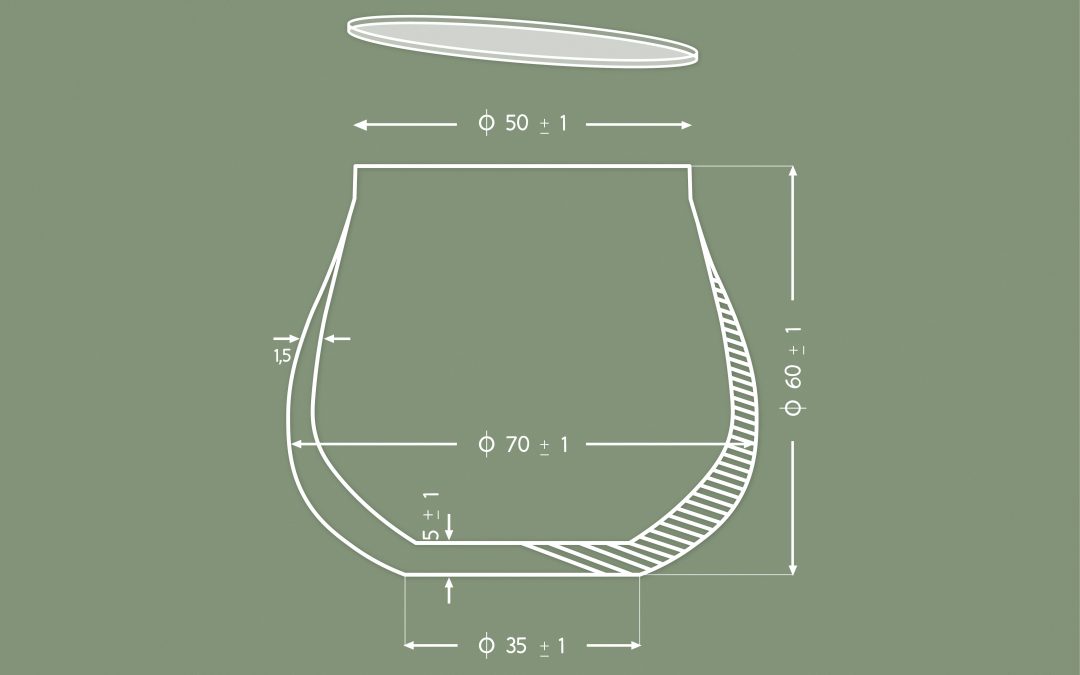That they are somewhat strange, right?
But in their defense, we’d say that you should definitely break bread with them.
Only metaphorically, though. You wouldn’t actually break bread with them because the only way to taste olive oil (like wine) is by tasting the oil and only the oil.
Of course, we can pair it with whatever we like, but olive oil should be tasted in its pure form.
And not even in just any glass, it should be a blue stemless tulip-shaped glass that steers all the aromas upwards.
Why should it be blue? Because tasting olive oil is a sensory experience that unfortunately doesn’t involve sight. You may be wondering, “How come? The color of olive oil is so beautiful!”. And yes, it is beautiful. It’s also beautiful to admire all its nuances, from pale yellow to bright green, but chromatic characteristics aren’t paramount when it comes to evaluating quality. Among other things, all that glitters is not oil because the color of the olive oil can be easily falsified, another reason why it shouldn’t be a determining factor in the official tasting phase – but you can do that with your friends!
It depends on many factors:
- the cultivar
- the harvest time (early, at veraison, late)
- the conservation
You only have to worry if you notice strange reddish and/or brownish streaks, meaning the oil may not be good. So always keep your eyes peeled!
Now let’s focus on smell and taste.
How do you taste olive oil? There is THE official technique, the one and only.
Pour a little oil into a glass, cover it with the special cap and then heat it by rubbing the palms of your hands around the glass. When the glass feels warmer than your hands, the tasting can begin. Ideally, the temperature should reach around 28 °C, at which point the glass can be uncovered and placed close to the nose – now smell and let yourself go.
Repeat the process several times. To avoid olfactory habituation, move the glass away and bring it closer. This way, the molecules released will stimulate the 10 million olfactory neurons of your olfactory system, and the depths of your memory will be revealed. You’ll begin to attribute scents to memories: almonds, artichokes, freshly cut grass, tomatoes, pine nuts, and so on.
What a wonderful adventure for your nose, huh?
Now, it’s time to bring the glass to your mouth and practice “stripping.” It is a somewhat noisy sucking technique – and not very elegant to do at a restaurant 🙂 – but of fundamental importance in the organoleptic evaluation of the oil. It consists of moving the oil from the tip towards the edges of the tongue using the air quickly introduced by the corners of the mouth. The mix of saliva, air, and oil is distributed across the taste buds, giving you the perception of bitterness, while the molecules go up the nasal cavities through retronasal olfaction and return an infinite number of aromas.
Finally, breathe in, and if it pinches your throat, it means that the oil is good.
Meet your friends’ eyes, raise your glasses, and say cheers! (It seems like now is the right time to break that bread mentioned above and start the pairings!)

